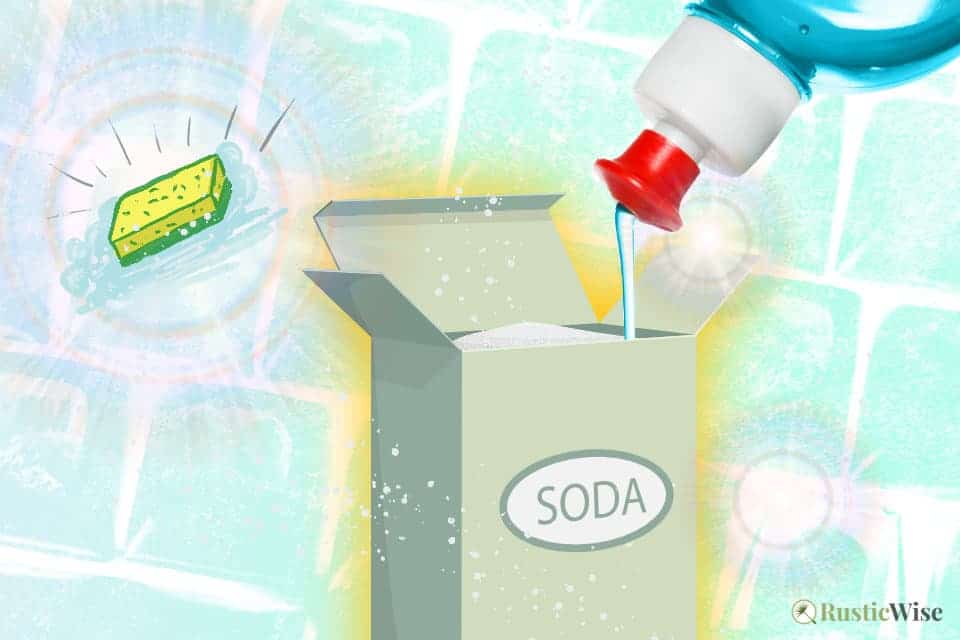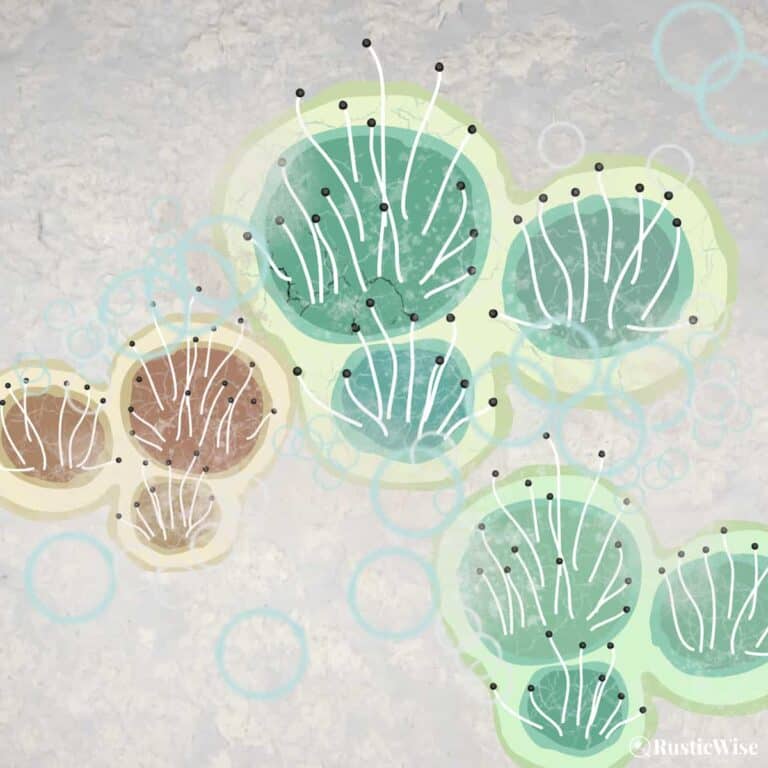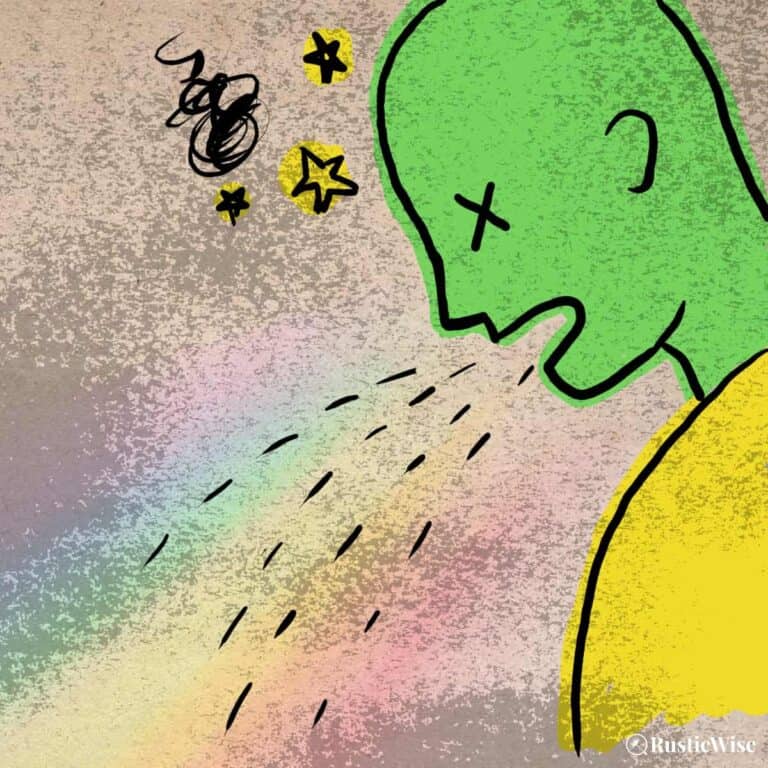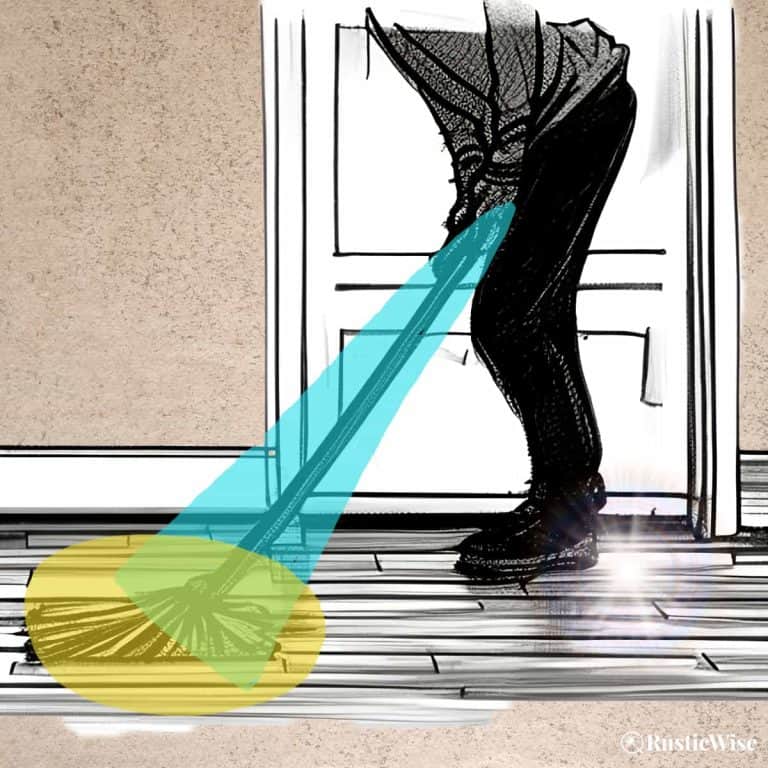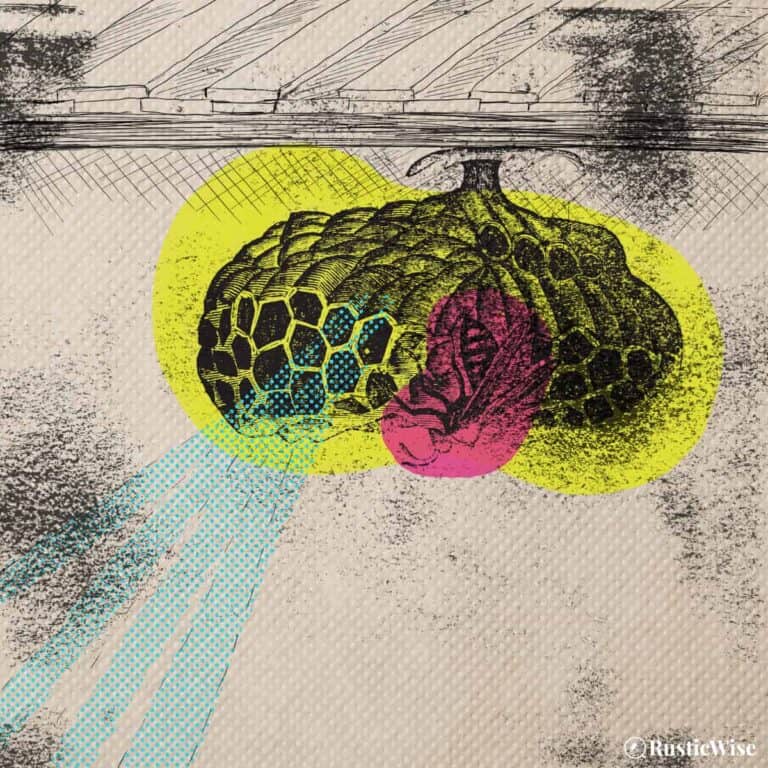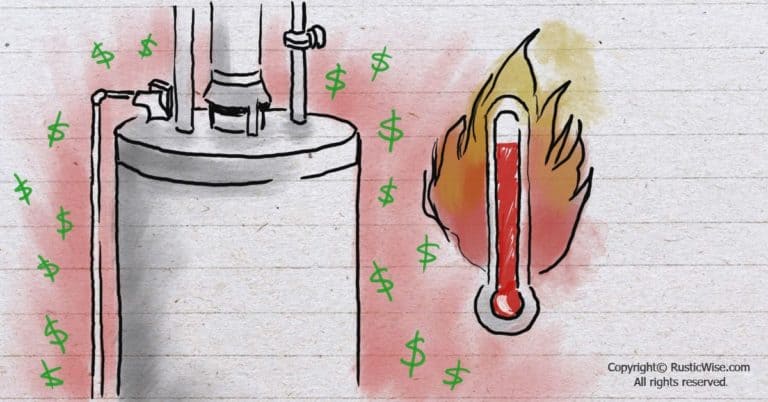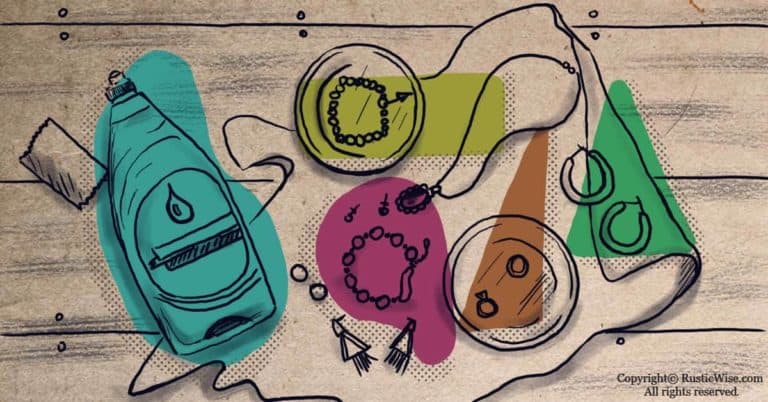Combine Baking Soda and Dish Soap for Cleaning: 9 Ways To Use It
Some cleaning ingredients work well on their own. Others, when combined, bump up the cleaning quotient, making your job easier.
Two such ingredients that play well together are baking soda and dish soap. Baking soda is a mild “scratchless” abrasive that helps remove stuck on grease, dirt, and neutralize odors. Dish soap (or liquid Castile soap) contains surfactants, which reduce the surface tension allowing oil and dirt particles to wash away. Together they help you banish grime, grease, and stubborn stains.
This cleaning combination is great for scouring kitchen sinks, tiles, and tubs. Keep reading for a closer look at how these two cleaning agents work, why you should be careful when using vinegar, plus an easy DIY recipe featuring baking soda and dish soap.
How baking soda and dish soap clean
Let’s take a closer look at each of these ingredients and how they help to remove stains and stuck-on dirt. When combined, baking soda and liquid dish soap provide ample cleaning power and require little elbow grease!
Baking soda (also called sodium bicarbonate) is a natural salt that’s composed of carbon, sodium, hydrogen and oxygen molecules.¹ It’s a versatile cleaning product and mild alkaline that provides gentle scouring power. Sodium bicarbonate is sometimes called a scratchless abrasive as it’s gentle enough for virtually all surfaces.
Here’s how baking soda cleans:
- Cuts through greasy surfaces
- Lifts dirt and grime
- Neutralizes odors
- Brightens and whitens (baking soda is also great for soaking soiled clothes)
- Removes stains from fruit juices and mild acids²
- Provides a “soft scrub”
Tip: Don’t confuse baking soda (sodium bicarbonate) with the similarly named washing soda (aka sodium carbonate). Washing soda is much more alkaline and abrasive than its cousin, sodium bicarbonate. Use caution if using washing soda as it can irritate eyes, nose, and skin.
Liquid dish soap (the kind we use to hand wash dishes) is a mild soap suitable for many household cleaning purposes. While we often only use this soap to scrub dirty dishes, its mild formula is also safe for most surfaces.
The main active cleaning ingredient in liquid dish detergent are surfactants, also called surface-active agents. Surfactants reduce the surface tension of water, which allows oil and grease to more easily wash away.
You can also use liquid Castile soap in place of commercial dish soap. Castile soap is a non-toxic plant-based soap, with fewer chemicals.
A little chemistry lesson about alkaline cleaners
Both baking soda and most brands of dish soap are alkaline. This means on the pH scale, alkaline (or basic) cleaners are those with a pH above 7.
On average, baking soda has a pH of around 9.5 while most liquid dish soaps range from pH 8–10.
When you combine baking soda with dish soap, the baking soda acts as a buffer to help stabilize the pH level keeping it at an ideal level for effective cleaning. Sodium bicarbonate also protects dish soap from acidic elements which may alter its pH.
If you have a greasy or fatty cleaning job, use alkaline cleaners! They’re great for removing grease or food particles, unclogging drains and toilets, removing dirt, and for cleaning up everyday spills around the kitchen.
9 ways to use the power of baking soda and dish soap
Use this dynamic cleaning duo in the kitchen and bathroom. The benefit of using this gentle cleaning solution is that it’s safe to use around young children and pets.
You can use these two ingredients by squirting a bit of liquid dish detergent onto a damp sponge or cleaning cloth, and sprinkling baking soda directly on top.
Or, if you’re tackling a larger mess (such as a shower), you can sprinkle sodium bicarbonate right onto the dirty surface and add dish soap in a zigzag or S-shape.
Here are 9 ways to use baking soda and dish soap together.
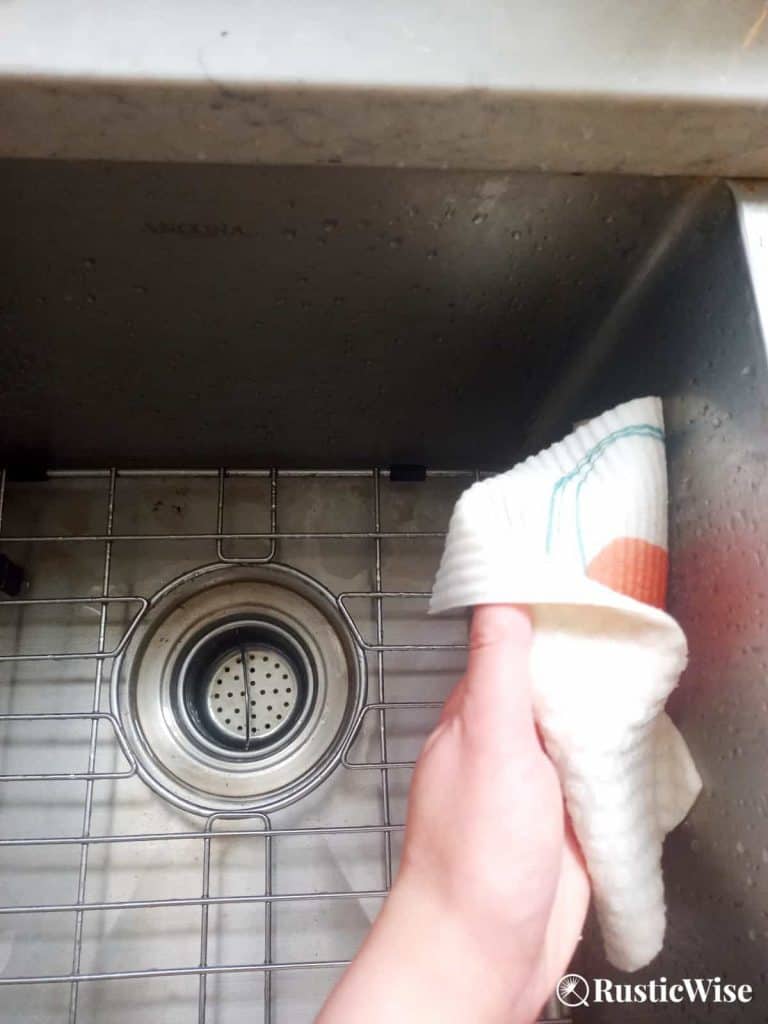
Credit: RusticWise
- Wash dishes for a sparkling clean: Washing dishes with baking soda and dish soap is an easy way to boost cleaning power. To use baking soda for washing dishes, simply fill your sink with hot or warm soapy water. Then add 2 heaping tablesoons of baking soda to the water. Soak any greasy pots or pans with stuck-on food in the solution for several minutes. This lets the powerful duo work their magic. Then scrub away! Another way is to simply sprinkle baking soda onto a damp sponge with a bit of dish soap to use as a gentle scour.
- Scrub stainless steel kitchen sinks: Use this cleaning duo to clean the sink regularly! Kitchen sinks are one of the filthiest areas in the home. The National Sanitation Foundation (NSF) conducted a study and identified the dirtiest area in a home is the kitchen (and not the bathroom). NSF found coliform bacteria (a group of bacteria in which Salmonella and E. coli belong); this group also shows possible fecal contamination. Coliform bacteria was found in 45 percent of kitchen sinks and 32 percent of kitchen counters.³
- Clean your countertops: The cleaning power of dish soap and sodium bicarbonate is safe for most countertops, including granite, quartz, butcher block, and laminate. Avoid using on marble surfaces which are extremely scratchable. If you have a food stain, sodium bicarbonate helps to gently lift stubborn stains.
- Make glass sparkle: If you have old dingy glassware that has mineral or soap scum buildup, a quick swipe of this cleaning duo can make it look like new again. Rinse well.
- Clean the inside of your fridge: Use this non-toxic scouring cleaner to clean fridge shelving and drawers. Rinse well, and wipe dry.
- Remove dirt buildup on wall tiles and tile flooring: Grody stains on wall tiles or flooring are no match for this cleaning pair. Use warm water to boost cleaning power.
- Clean tubs and showers: A natural cleaning scour is exactly what most bathroom tubs and showers need. This duo is great for removing built up grime, soap scum, or minerals from hard water. You can say goodbye to harsh chemicals.
- Brighten porcelain enamel cookware: With regular use, the bottom and interior of enamelled cookware can develop layers of baked on oil stains and grease stains. This cleaning pair helps cut through grease and brighten surfaces.
- Remove tea and coffee stains on stoneware and plastic dishes: Your favorite coffee mug has probably seen better days. Restore it to its former glory by giving the inside a quick scrub. Plastic dinnerware is also prone to staining. Use this duo to lighten and remove stains.⁴
What surfaces can you NOT clean with baking soda and dish soap?
Virtually all hard surfaces (and most fabrics) are fair game when using this cleaning duo.
Dish soap (and Castile soap) is safe for virtually everything (except you might not want to use it when washing your seasoned Dutch oven skillet).
Avoid using baking soda on the following surfaces:⁵
- Aluminum surfaces: This includes aluminum pots and pans. Baking soda may discolor the metal surface.
- Precious antique silverware: Some delicate silver pieces may not take kindly to the (mild) abrasive properties of sodium bicarbonate.
- Gold or silver-trimmed dinnerware: You know that fancy metallic trimmed fine china set you inherited from your grandmother? Baking soda might scratch the shiny metallic finish, so it’s best to steer clear of these pieces.
- Marble surfaces: Marble is a finicky stone and is more prone to etching. Stick with specific cleaners designed for marble surfaces only.
Easy DIY multi-purpose scouring cleaner
Now that we’ve examined how this cleaner works, here’s an easy DIY recipe to get you started. Use this mild scouring cleaner to scrub out the kitchen sink, or for cleaning bathroom tile and tub.
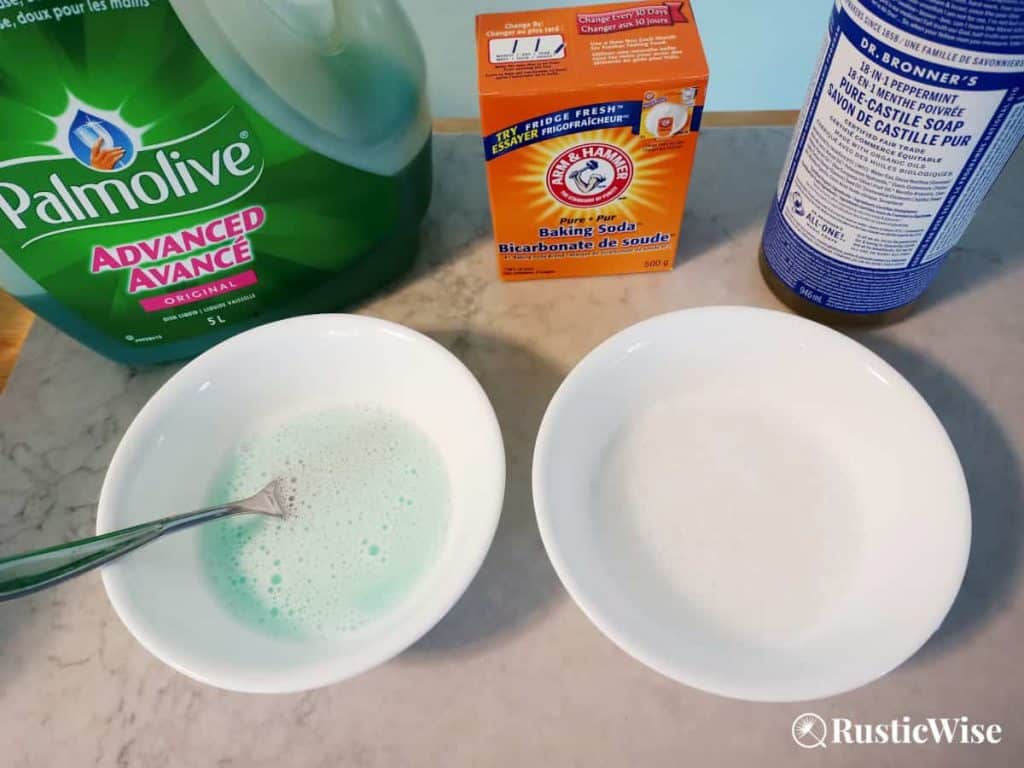
Credit: RusticWise
You’ll need:
- 1½ cups baking soda (sodium bicarbonate)
- ½ cup liquid dish soap (OR liquid Castile soap)
- ½ cup warm distilled, filtered, or boiled water
- Spray bottle, storage jar, or sealed container
Note: Whenever you’re making DIY cleaning products you’ll be storing for a while, it’s best to use distilled, filtered, or boiled water to remove any impurities from the water to ensure a longer shelf life. You can use either regular Dawn dish soap and baking soda (or another brand of your choice). Or, liquid Castile soap like Dr. Bronner’s also works.
I find the texture of this cleaner is a bit on the thicker side, so I like to apply it directly to a damp cleaning cloth or sponge. But you could also use a spray bottle if you like.
- Combine the baking soda and warm water. Stir until all baking soda dissolves.
- Add liquid dish soap or Castile soap. Stir until well combined.
To use, simply apply a bit directly onto a damp cleaning cloth or sponge, or spray as needed. Remember to rinse well! Baking soda leaves streaks if not rinsed properly.
Notes of caution when using vinegar
Now, whenever somebody mentions baking soda, most people instantly think of its most famous companion, vinegar.
While white vinegar is a cleaning powerhouse , there is much confusion about how to use it properly, especially when used together with baking soda.
If you’ve ever combined baking soda (a mild base) with vinegar (a mild acid), you’ll know that a chemical reaction occurs—fizzing.
This fizzing reaction gives a cleaning boost to whatever surface it’s applied to.
To get the most of this cleaning action, you want the fizzing to occur directly on the soiled surface, and not in a bottle.
That’s why it’s best to apply vinegar and baking soda one after another—don’t pre-mix it in a bowl or bottle.
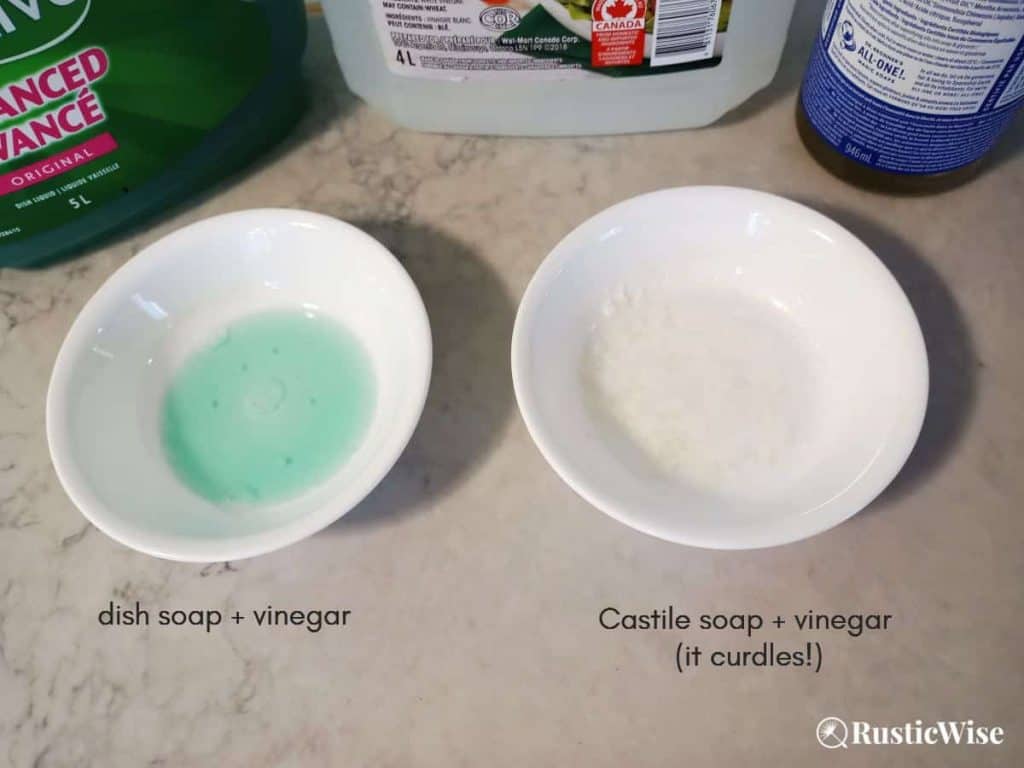
Credit: RusticWise
Why you don’t want to combine vinegar and Castile soap
There’s an unpleasant reaction that occurs when you mix Castile soap (a vegetable-based soap) with vinegar—it curdles!
Why you don’t need to combine vinegar with dish soap
These two cleaning agents work better when used alone, not together.
While there’s no harm in mixing vinegar with liquid dish detergent, the beneficial properties of each become neutralized when mixed together.
I combined vinegar with dish soap as an experiment. While it doesn’t curdle like Castile soap, it doesn’t work much. It doesn’t bubble as much as liquid soap on its own. And, it lacks the cleaning power of regular vinegar when used solo.
Related questions
What does putting dish soap in your toilet do?
Adding roughly ½ cup of Dawn dish soap (or whatever brand you have on hand) paired with hot water can help unclog toilet clogs. The dish soap helps lubricate and also loosens stubborn toilet clogs. Read how to unclog your toilet in 5 easy steps.
Can you use baking soda for laundry?
Absolutely! Making a sodium bicarbonate paste with a bit of water can neutralize odors, brighten fabrics and remove stains. Read more about how to use sodium bicarbonate for laundry.
Is it safe to put baking soda and dish soap in a dishwasher?
No, despite all the so-called “cleaning hacks” touting this duo as a dishwasher detergent alternative, it’s not safe to use baking soda with dish soap in your dishwasher.
Unlike regular dishwasher detergent which cleans without bubbling, liquid dish soap is notorious for creating foaming bubbles. Even a few drops of Dawn dish soap is enough to wreak havoc on your dishwasher. Just don’t do it.
👉 If you like this post, see other Timeless Cleaning Tips You Need To Know. 🌟
Would you like more timeless tips via email?
Fun tips to help you live an independent, self-sustaining lifestyle. Opt-out at any time.


References
- Chemical Safety Facts, Sodium Bicarbonate (Baking Soda), https://www.chemicalsafetyfacts.org/sodium-bicarbonate-baking-soda/. Accessed October 2023.
- University of Arkansas, Clean and Green Homemade Cleaners, https://www.uaex.uada.edu/environment-nature/water/quality/clean-green-homemade-cleaners.aspx. Accessed October 2023.
- National Sanitation Foundation (NSF), Germiest Items in the Home, https://www.nsf.org/blog/consumer/germiest-items-home. Accessed October 2023.
- New Mexico State University, Selection and Use of Home Cleaning Products, https://pubs.nmsu.edu/_g/G304/. Accessed October 2023.
- Klahre, Ayn-Monique (26 August 2021). “4 Things You Should Never Clean with Baking Soda,” The Kitchn. Accessed October 2023.

Author: Theresa Tesolin
Theresa is co-founder of RusticWise. She helps people unleash their inner DIY spirit by encouraging them to get dirty and make or grow something from scratch.

